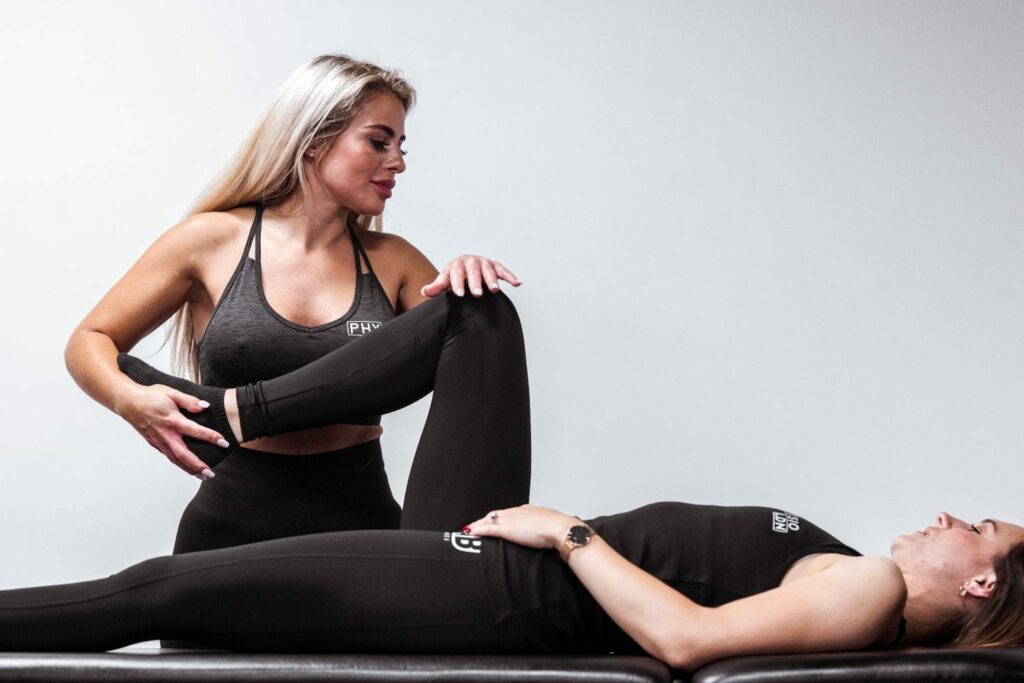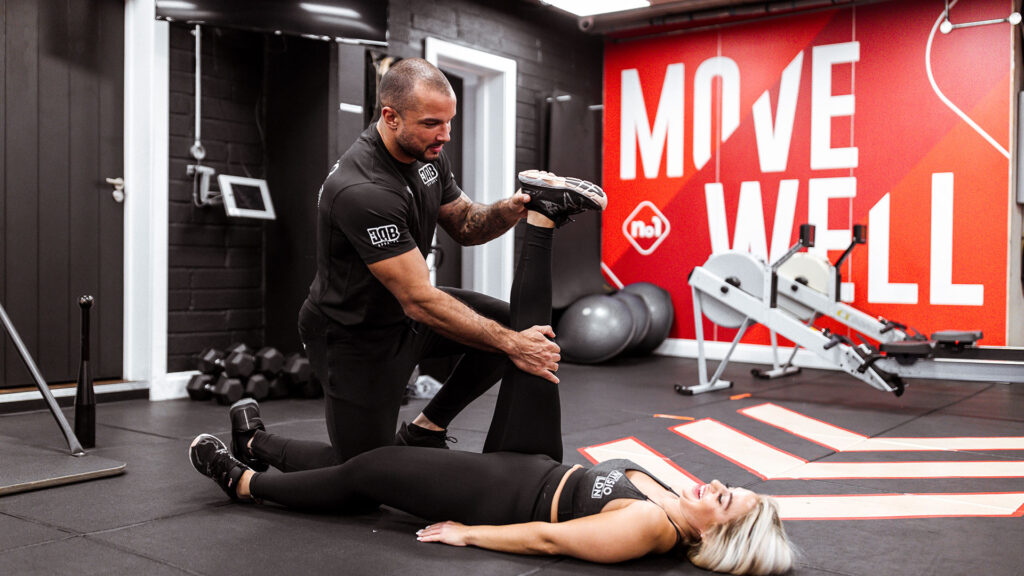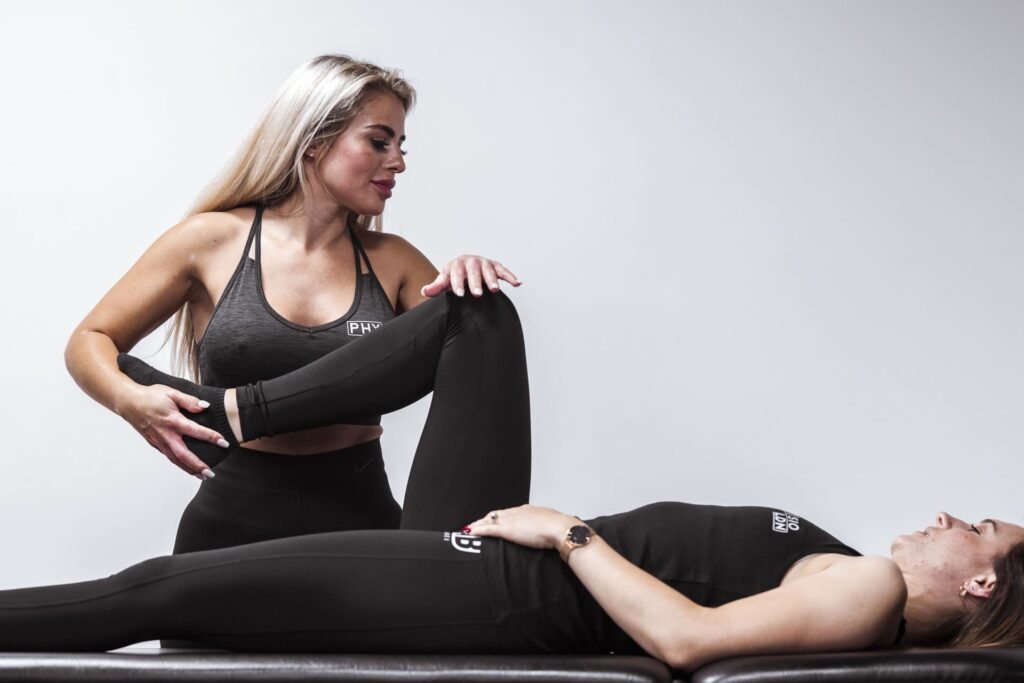Table of Contents
Main Takeaways
- Pain below the kneecap often stems from overuse, PFPS, or tendonitis.
- Physiotherapy strengthens supporting muscles and improves alignment.
- Workplace ergonomics and protective knee pads prevent job-related pain.
- Weight management and low-impact exercise reduce knee stress.
- Early diagnosis ensures better outcomes and faster recovery.
Knee pain below the kneecap is a common complaint that affects a wide range of people, from athletes to office workers. This type of pain can significantly impact daily activities, making walking, bending, or even standing uncomfortable. Understanding the causes, symptoms, and effective treatments is essential to managing this condition and preventing further injury.If you’re comparing care options locally, evidence-based knee pain treatment in London can help you address symptoms while staying active.
In the United States, knee injuries accounted for 6% of all nonfatal injuries in 2020 and represented 35% of lower extremity injuries, highlighting the prevalence and impact of knee problems in the workforce and general population according to Concentra. With many occupations requiring prolonged kneeling or bending, knee pain below the kneecap is an occupational hazard that demands both awareness and effective intervention.
Causes of Pain Under the Kneecap
Pain beneath the kneecap, or patella, can arise from various causes, ranging from acute injuries to chronic conditions. One of the most frequent causes is overuse or repetitive stress, often seen in athletes, manual laborers, and individuals whose jobs involve frequent kneeling or squatting.

Occupations such as carpentry and mining, which involve heavy lifting and knee bending, have been shown to increase the risk of knee pain and injury according to a 2015 study on occupational risks. Additionally, healthcare and social assistance industries reported the highest number of knee injury cases in 2020, with 13,790 incidents, accounting for a significant portion of workplace injuries as reported by Concentra.
Other causes include direct trauma to the knee, inflammation of the tendons or bursae, and biomechanical imbalances such as misalignment of the patella. These factors can contribute to pain localized under the kneecap, often worsening with activity.
Another significant contributor to pain under the kneecap is patellofemoral pain syndrome (PFPS), a condition that affects many individuals, particularly those who engage in sports that require jumping or running. PFPS is characterized by a dull, aching pain that typically worsens with activities such as climbing stairs, squatting, or sitting for prolonged periods.
This syndrome can be exacerbated by muscle imbalances, particularly in the quadriceps and hip muscles, which can lead to improper tracking of the patella during movement.
Moreover, conditions such as osteoarthritis can also play a role in knee pain, particularly in older adults. As the cartilage that cushions the knee joint wears down over time, it can lead to increased friction and discomfort around the kneecap. This degenerative process can result in stiffness and swelling, further complicating the mobility of the affected individual. Understanding the underlying causes of kneecap pain is crucial for effective knee pain treatment and management, as it can vary significantly based on individual circumstances and activity levels.
Patellofemoral Pain Syndrome
One of the most common diagnoses for pain below the kneecap is Patellofemoral Pain Syndrome (PFPS), sometimes referred to as “runner’s knee.” PFPS is characterized by pain around or behind the kneecap, especially during activities that load the joint, such as climbing stairs, squatting, or prolonged sitting.

The condition results from abnormal tracking of the patella over the femur, causing irritation of the cartilage or surrounding soft tissues. Factors contributing to PFPS include muscle imbalances, overuse, and structural abnormalities. Individuals who engage in repetitive activities or sports that put stress on the knee, such as running, cycling, or jumping, are particularly susceptible to developing PFPS. The condition can also affect those who have recently increased their activity levels or changed their exercise routines without allowing adequate time for adaptation.
Given the high incidence of knee injuries in jobs requiring prolonged kneeling, PFPS is a significant concern in occupational health. Aaron Skemp, Product Director at Ergodyne, notes that “kneeling for significant amounts of time on the job is unavoidable for many,” emphasizing the need for protective measures and effective management strategies according to Ergodyne.
In addition to the physical discomfort, PFPS can lead to decreased productivity and increased absenteeism, which can have a ripple effect on workplace morale and efficiency. Employers are encouraged to implement ergonomic solutions, such as cushioned kneepads and proper training on body mechanics, to help mitigate the risks associated with prolonged kneeling.
Furthermore, rehabilitation strategies for PFPS often include a combination of knee pain physical therapy, strengthening exercises, and modifications to activity levels. Targeted exercises that focus on the quadriceps, hamstrings, and hip muscles can help restore balance and improve patellar tracking. Stretching routines may also be beneficial, as they can enhance flexibility and reduce tension in the surrounding muscle groups. In some cases, orthotic devices or specialized footwear may be recommended to provide additional support and alignment for the knee joint, further aiding in the recovery process.
Best Treatments
Treating knee pain below the kneecap requires a comprehensive approach tailored to the individual’s condition and lifestyle. Early diagnosis and intervention can prevent chronic pain and disability.

Physiotherapy plays a central role in managing patellofemoral pain and other causes of anterior knee pain. Expert physiotherapists assess the root cause of pain, including muscle imbalances, joint mechanics, and movement patterns. Treatment often includes hands-on techniques such as deep tissue massage and joint mobilization, combined with tailored exercise programs to strengthen the quadriceps, improve flexibility, and correct biomechanical issues.
In London, clinics such as One Body LDN offer award-winning physiotherapy services with therapists who receive over five times the required regulatory training, ensuring expert care for knee pain and related musculoskeletal conditions. Their approach blends manual therapy with exercise rehabilitation to provide both immediate relief and long-term improvement One Body LDN Physiotherapy Services.
For workers exposed to knee strain, protective equipment like hard shell hinged knee pads introduced by Ergodyne in 2022 can reduce the incidence of job-related knee injuries by providing support and cushioning during prolonged kneeling Ergodyne’s new knee pads. Such preventative measures, combined with proper ergonomics and rehabilitation, are vital in reducing knee pain prevalence and associated economic costs.
In some cases, adjunct therapies such as sports massage can complement physiotherapy by releasing muscle tightness and improving circulation around the knee joint. London’s deep tissue sports massage clinics provide targeted treatments that help reduce stiffness and promote recovery, supporting overall knee health London physiotherapy clinics.
Additionally, the incorporation of modalities like acupuncture and dry needling has gained traction in recent years as effective treatments for knee pain. Acupuncture, an ancient Chinese practice, involves inserting thin needles at specific points to stimulate the body’s natural pain relief mechanisms. This can be particularly beneficial for individuals who experience chronic pain or have not found relief through conventional therapies.
Similarly, dry needling targets trigger points in the muscles, promoting relaxation and reducing tension, which can alleviate pain around the knee area.
Moreover, lifestyle modifications such as weight management and low-impact exercise can significantly influence knee health. Maintaining a healthy weight reduces the stress on knee joints, while activities like swimming, cycling, or yoga can enhance strength and flexibility without exacerbating pain.
Nutrition also plays a critical role; a diet rich in anti-inflammatory foods, such as omega-3 fatty acids, fruits, and vegetables, can support joint health and reduce inflammation. Integrating these holistic approaches can create a well-rounded treatment plan for individuals suffering from knee pain. For detail information see the blog knee pain and weight lose.
FAQs
What causes pain specifically below the kneecap?
Pain below the kneecap can arise from overuse injuries, patellofemoral pain syndrome, tendonitis, bursitis, or direct trauma. It often relates to abnormal patella tracking or muscle imbalances affecting knee joint mechanics. Factors such as improper footwear, lack of flexibility, and inadequate warm-up routines can exacerbate these issues, leading to chronic discomfort. Additionally, activities that involve repetitive knee bending, such as running or cycling, can contribute to the development of pain in this area, especially if the body is not conditioned for such exertion.
How is patellofemoral pain syndrome diagnosed?
Diagnosis typically involves a physical examination focusing on knee alignment, muscle strength, and movement patterns. Imaging may be used to rule out other conditions. A thorough assessment by a physiotherapist can identify PFPS and guide treatment. During the evaluation, the physiotherapist may also assess the biomechanics of the lower extremities, including the hips and ankles, as these can significantly influence knee function. Understanding the patient’s activity levels and any previous injuries is crucial in forming a comprehensive treatment plan that addresses both symptoms and underlying causes.
Can physiotherapy help with knee pain below the kneecap?
Yes, physiotherapy is highly effective in treating knee pain below the kneecap. It addresses the root causes through manual therapy, strengthening exercises, and movement retraining, promoting long-term recovery and pain relief. Physiotherapists may utilize modalities such as ultrasound or electrical stimulation to reduce pain and inflammation, while also incorporating flexibility training to enhance range of motion. Furthermore, education on proper body mechanics and activity modifications can empower patients to manage their symptoms and prevent future injuries effectively.
Are knee pads effective in preventing knee pain for workers?
Protective knee pads, especially those designed with hard shell and hinged features, can significantly reduce knee injuries caused by prolonged kneeling or impact, as highlighted by recent product innovations from Ergodyne. These knee pads are engineered to distribute pressure evenly and provide cushioning, which is essential for workers who spend long hours on their knees. Additionally, some models come with moisture-wicking materials to enhance comfort and hygiene during extended use, making them an invaluable tool for those in physically demanding jobs.
When should I seek medical advice for knee pain?
If knee pain persists for more than a few days, worsens with activity, or is accompanied by swelling or instability, it is advisable to consult a healthcare professional or physiotherapist for a proper assessment and treatment plan. Early intervention can be critical in preventing further injury and ensuring a more efficient recovery process. It’s also important to be aware of any accompanying symptoms, such as fever or significant bruising, which may indicate a more serious underlying condition that requires immediate medical attention.
Is knee pain below the kneecap common in certain jobs?
Yes, jobs involving frequent kneeling, bending, or heavy lifting, such as healthcare, construction, and mining, have higher rates of knee injuries and pain, making workplace ergonomics and protective measures essential. In addition to knee pads, employers can implement training programs that focus on proper lifting techniques and ergonomic workstations to minimize strain on the knees. Regular breaks and stretching exercises can also play a crucial role in maintaining knee health among workers, ensuring they remain productive and injury-free in their demanding roles.
Take Control of Your Knee Pain with One Body LDN
If you’re struggling with knee pain below the kneecap, don’t let it hold you back any longer. One Body LDN is here to help you tackle the root cause of your discomfort and guide you towards a pain-free life. Our award-winning team of physiotherapy experts is ready to provide you with a precise diagnosis and a tailored treatment plan that blends exercise rehab with deep tissue massage. Specializing in musculoskeletal physiotherapy and sports injuries, we cater to both corporate office workers and athletes. Trust in our results-based approach and experience instant pain relief without the worry of being oversold treatments. Book your free initial assessment at our clinic today and take the first step towards feeling amazing again.


